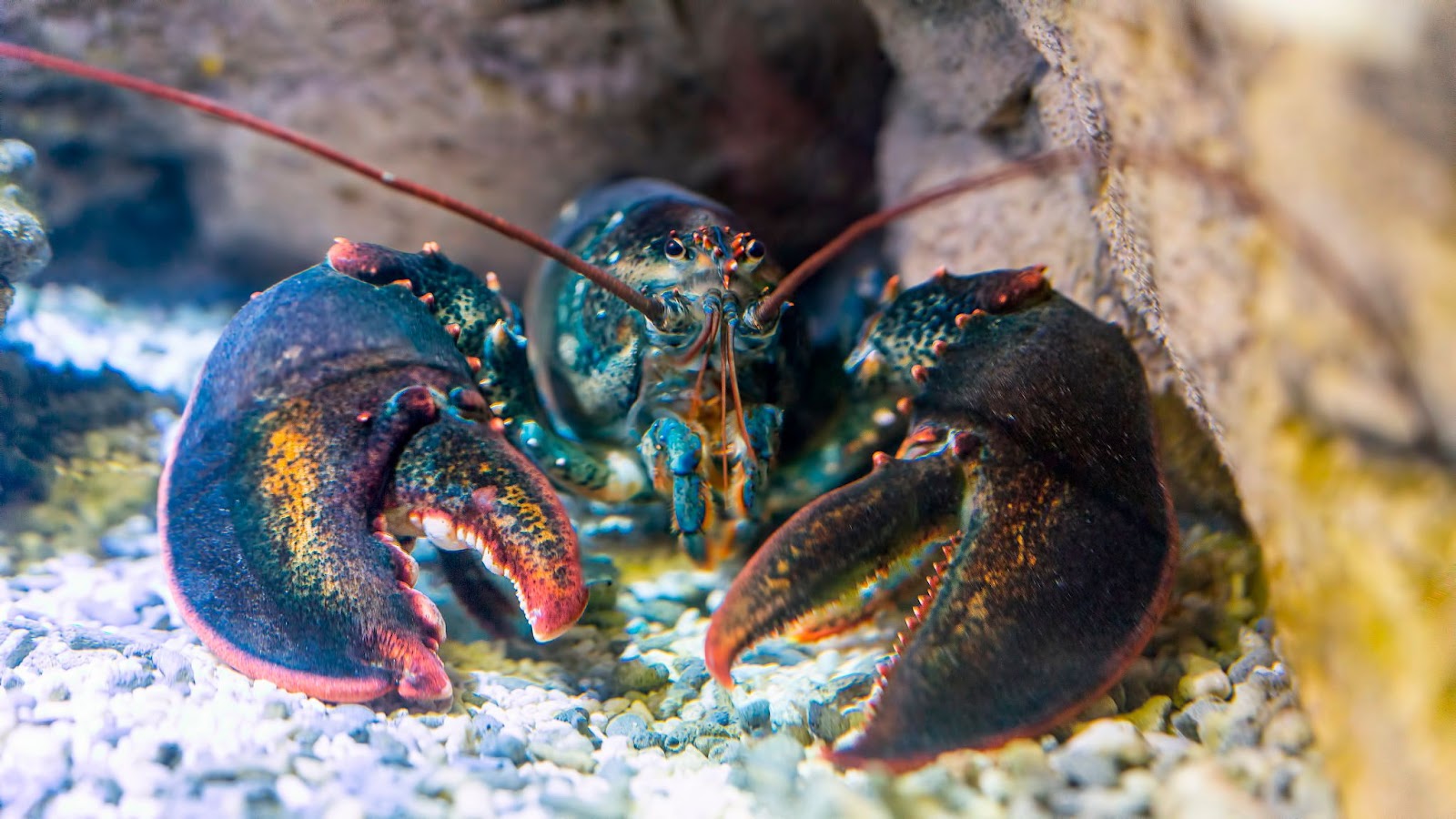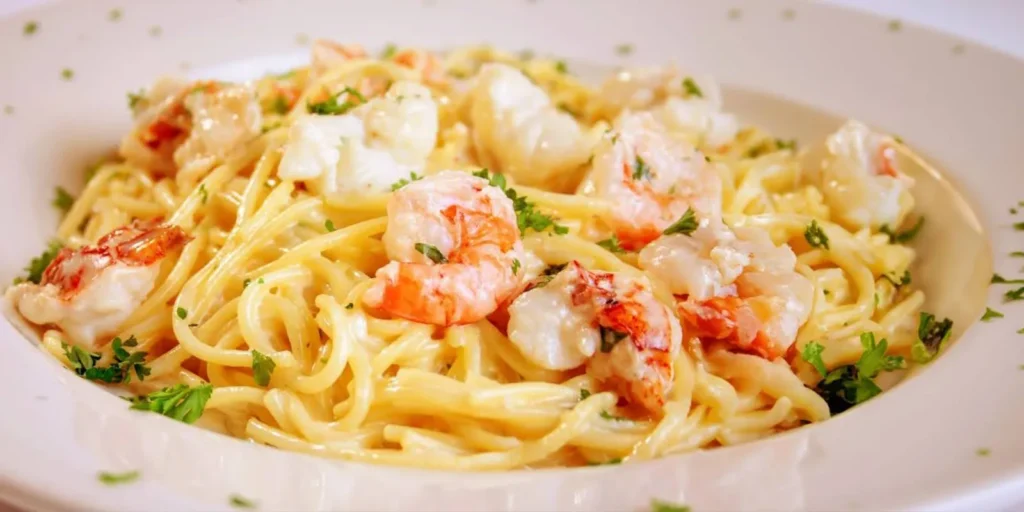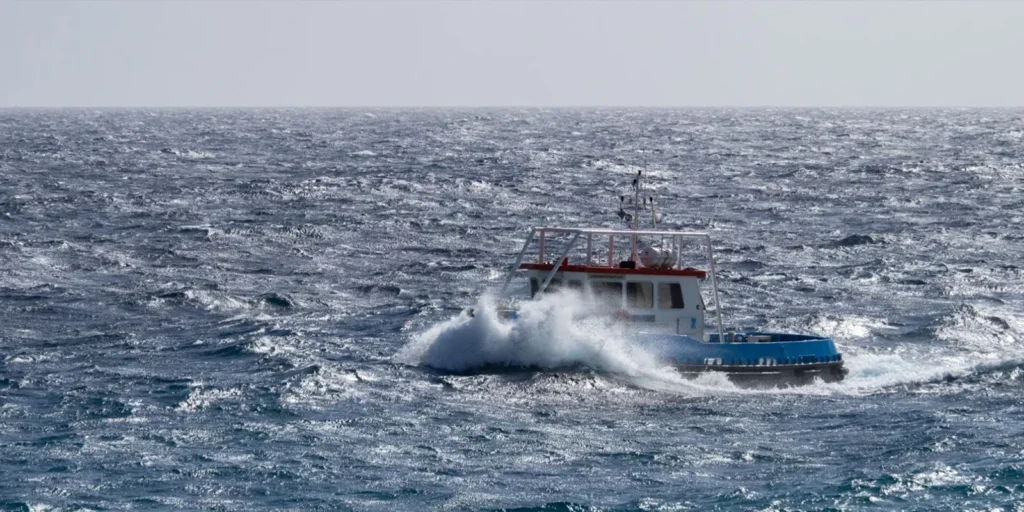
What Is the Ideal Environment for Lobsters?
Lobsters are amazing and resilient animals. So here at ShopLobster, we believe it’s important to highlight the questions surrounding their habitat. Questions such as, what exactly what is their ideal environment? What conditions do they need to not only survive, but to thrive? Proper temperatures, salinity, and specific food sources can all play a role in a lobster’s survival, but there’s more to it than that. In this article, we’ll go into detail about the ideal natural habitat of lobsters, how they live, caring for live lobsters, and threats to their habitat. Through this we hope to deliver a deeper understanding of all that goes into getting live Maine lobster directly to your table from ShopLobster.
Natural Habitat: Where do Lobsters Live?
The American lobster can be found along the northwest coast of the Atlantic Ocean along the continental shelf. From the coastal waters of Maine down to New Jersey, an abundance of lobsters can be found. Offshore, many lobsters can be found from the waters of Maine all the way down through the Carolinas. While most lobsters prefer more shallow, coastal habitats, they can even be found at depths over 2,000 feet in some cases. Lobsters live alone along the ocean floor and opt for rocky areas where shelter is readily available. They may also live in mud burrows or other crevices they can use for cover. Lobsters living further offshore can be found living in canyons along the continental shelf.
Natural Habitat: Saltwater or Freshwater?
As ocean natives, lobsters need saltwater to survive. Lobsters rely not only on the salinity of the ocean, but the trace minerals it provides as well. Minerals such as iodine, magnesium, and calcium are critical for long-term lobster survival. Lobsters were designed to live in a state of isotonic equilibrium with their environment. Simply put, the water/salt ratio found within the cells of a lobster’s body must have the same concentrations as the water around them. Lobsters need to regulate the amount of salt within their body tissues to survive. These crustaceans have evolved over time to be able to balance the salt in their bodies to match the salinity of the ocean. Additionally, because lobsters use gills to breathe, oxygen rich saltwater is necessary for their survival. Through the process of osmosis, their bodies can absorb from the saltwater the oxygen needed for cell survival.
Can Lobsters Live in Freshwater?
True lobsters will not survive in freshwater for long. If you were to put a lobster in freshwater, it would eventually die due to the obvious difference between salt and freshwater: the salinity. When placed in freshwater lobsters are unable to regulate the salt concentration in their bodies as freshwater rushes in. Without the ability to control this, freshwater floods into their body tissues and the cells begin to expand. Lobsters are unable to prevent fluid buildup from an environment with low salinity, and as a result, the lobster will die.
The Ideal Water Temperature for Lobsters to Live
Typically, lobsters most prefer the colder water, with ideal water fahrenheit temperatures in the 50’s. Not only do lobsters prefer these cooler temperatures, the oxygen concentrations are much higher in cold water which is essential for lobster’s survival. As the waters began to warm off the coast of Connecticut and Rhode Island, lobster populations were recorded making a migration to the Gulf of Maine where temperatures are much colder. From this observation it’s clear that lobsters will go where the temperatures are better suited for their survival.
Why is Warm Water Deadly to Lobsters?
Warm water can be quite harmful to cold water lobsters such as those found off the coast of Maine. Lobsters have a stress threshold which is directly related to the temperature of their environment. Exposure to water temperatures above 65º Fahrenheit can lead to compromised immune and respiratory systems in lobsters. As a result of stress, lobsters may develop reproductive problems due to shell disease.
Life Stages and Their Survival
The way lobsters interact with their environment varies depending on their life stage. During their larval stage, lobsters will float for several weeks in the water column and feed on any tiny zooplankton they can find. Many will not survive this stage due to their increased vulnerability to predators. In the juvenile stage, lobsters will seek shelter on the bottom of the ocean. Still vulnerable, juveniles will take short trips to find food such as small snails and crabs. This goes on for about 5-10 years until they reach adulthood. During this stage lobsters will molt an average of 20 times. Once at their adult stage, lobsters still choose to live in shelters, however, they are much more equipped to protect themselves against predators. Armed with more protection, adult lobsters will spend more time away from home in search of food. Now adults, lobsters will begin to feed on much larger prey.
What do Lobsters Eat?
Some say lobsters will eat anything since they are not picky eaters. Although many once believed lobsters to be scavengers, that is far from the truth. Research has since discovered that lobsters are more opportunists than anything. Lobsters tend to feed on whatever they can get their claws on; this includes: fish, mussels, crabs, and sea urchins, but that’s not all. Lobsters have even displayed cannibalistic tendencies, sometimes even eating other lobsters!
Caring for Live Lobsters
The decision to keep a lobster as a pet comes with many considerations to bear in mind. Understanding the ideal environment for lobsters to live is crucial to their survival. Here is a list of things to keep in mind when considering caring for live lobsters:
- Natural seawater has a pH of around 8.1. With this in mind, lobsters must be in an environment with a pH greater than 5, but less than 9.
- The ideal water temperature for lobsters is less than 68º Fahrenheit. That being said, it’s important to remember that sudden changes in temperature can also kill lobsters. For this reason, lobsters should be gradually introduced to new environments where water temperatures may vary.
- Lobsters are solitary animals. Lobsters are extremely territorial, not just with other lobsters but even with small fish, shrimp, and almost anything else. Remember that lobsters are opportunistic, and sometimes cannibalistic; implementing a mesh screen can keep lobsters from making any other animals in the tank its next meal.
- Copper is lethal to lobsters. Copper is extremely lethal to lobsters, so their tanks mustn’t contain any copper. Lobsters should also never be allowed direct contact with cooling surfaces such as refrigerant coils.
- Use good materials to avoid mold growth. Materials that are continually cracking or molding, such as pipes or filters, will affect the lobster’s health. Always opt for good, high-quality materials to protect your pet lobster.
- Lobsters excrete ammonia – a gas that is toxic for lobsters themselves – if a lobster is left in the same water for too long, it will die due to the ammonia building up in the environment. Lobstermen often use a storage system that pumps actual seawater into the tanks to mitigate ammonia buildup. While almost impossible for the average lobster owner, weekly water changes are a doable solution to keep tank water fresh.
Threats to Their Natural Habitat
Quite a few things are threats to the lobster’s natural habitat:
- Climate change
- Ocean dumping of sewage sludge
- Unregulated practices of silviculture, agriculture, or coastal development
- Pollutants such as heavy metals, pesticides, and petroleum products
These things can make the lobster’s natural environment undesirable, which will likely cause lobsters to keep moving in search of a habitat that is more ideal for survival. At ShopLobster, we ensure our lobstering partners use sustainable practices, which will help curb the environmental impact of lobstering and harmful action toward Maine’s coastal ecosystem. Explore our Shop today to view the live lobsters that can be shipped directly to your door!










